
Selecting the right bed size can profoundly enhance your sleep quality and overall comfort. Bed size guides have become essential resources for homeowners, interior enthusiasts, and anyone looking to design a bedroom that suits their lifestyle, space, and personal comfort preferences.
This article provides detailed guidance to help you choose the ideal bed size for any room or requirement. Whether you prefer intimate coziness or expansive luxury, these tips will help you create a bedroom that is both restful and stylish.
Fitting a bed into your room can often feel like solving a challenging puzzle. The key is to balance comfort with space efficiency, ensuring the bed complements the room without crowding it.
Visualize a room where a perfectly sized bed sits comfortably, leaving room for a reading corner or a desk. The contrast between a compact twin and a sprawling king becomes apparent, turning your mental layout into a practical design.
Room size largely dictates the appropriate bed. Small bedrooms benefit from twin or loft beds to maximize space, while large master suites can accommodate a California king for luxury. Style considerations—like minimalist frames for modern spaces or ornate wood for a classic look—also influence bed choice.
Begin by measuring your room’s dimensions, leaving at least 24 inches around the bed for walking space. Ensure the bed doesn’t block doors or windows. A well-proportioned bed frame enhances harmony, while a mismatched size can make a room feel cramped or empty.
Personalize with a bed frame that complements your decor. Choose headboards and bedding that reflect your style, incorporating modular or adjustable options if you enjoy rearranging the room frequently. Proper planning transforms a bedroom into a sanctuary of comfort and aesthetic appeal.
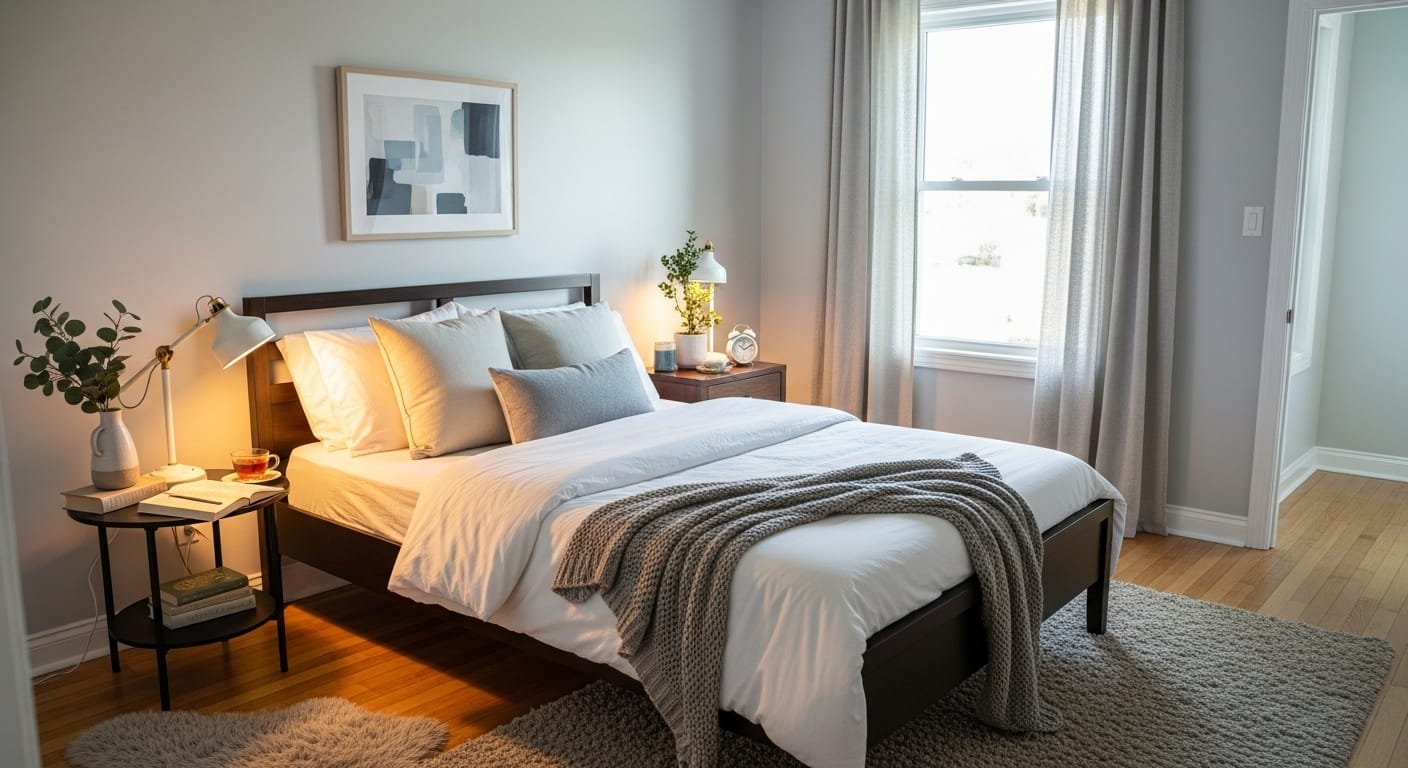
Small bedrooms often require careful planning to remain functional without feeling cramped. Twin and Twin XL beds provide a solution, but selecting a slim-profile bed is crucial.
Imagine a narrow bedroom with a twin bed along one wall, leaving space for a small desk or storage unit. Low-profile frames preserve headroom, while light-colored bedding and minimalistic decor enhance openness.
Use vertical storage, built-in drawers, or under-bed storage to save space. Multi-functional furniture, such as fold-away desks or wall-mounted wardrobes, increases usability without crowding the room. Keep pathways clear and avoid bulky frames that overwhelm the space.
Add personality through textured throws, colorful bedding, or wall-mounted lighting to maintain a welcoming feel without compromising functionality. Smart use of twin beds shows that even small rooms can be airy, stylish, and comfortable.
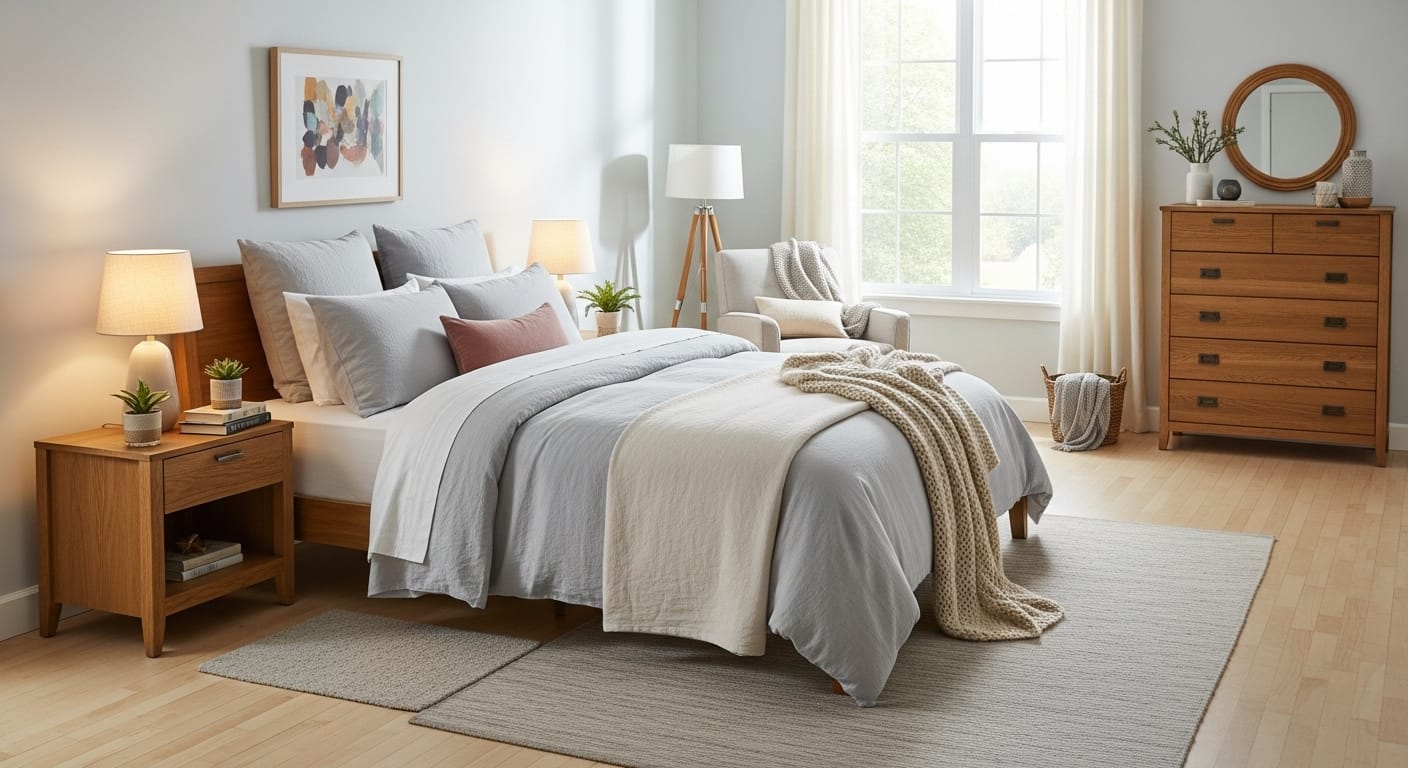
King and California king beds offer unmatched comfort but require careful planning to avoid making the room feel empty or oversized.
Visualize a spacious master suite with a plush king bed centered against a soft wall, flanked by minimalist nightstands. Layered bedding with throws and oversized pillows adds warmth, while soft lighting creates intimacy.
Choose a platform frame with a tall headboard for modern elegance or a carved wooden frame for a classic aesthetic. Ensure at least 24 inches of clearance on each side for walkways. Layer textiles like rugs, curtains, and blankets to create a luxurious feel. Keep surrounding furniture minimal to maintain openness.
A master suite with a large bed transforms the bedroom into a personal retreat, combining comfort, elegance, and practical design.
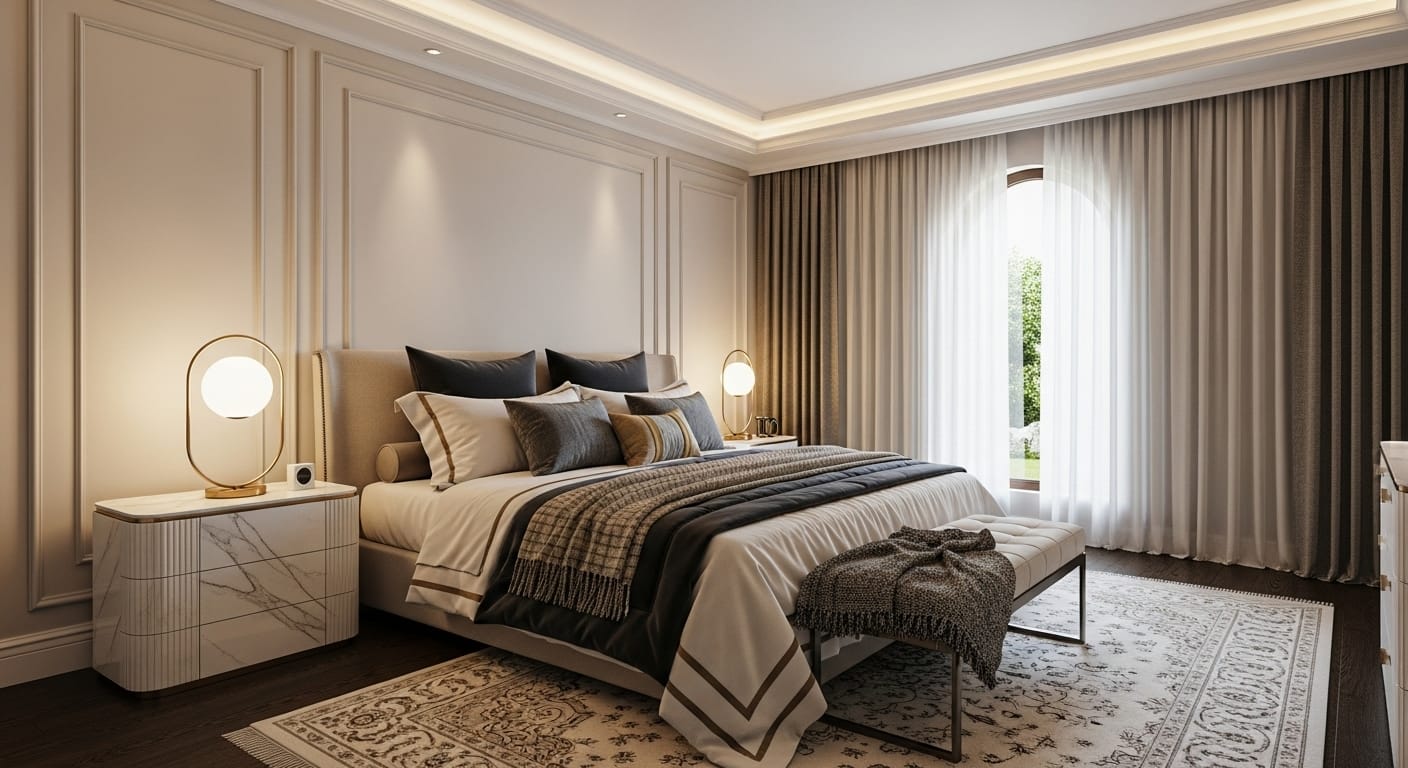
Guest rooms must balance comfort and versatility. Full or queen beds work for most visitors, but options like daybeds or pull-out sofas add flexibility.
Imagine a guest room with a full-size bed, a compact desk, and soft lighting, maintaining ample floor space. Choose neutral decor to appeal to diverse guests, and incorporate foldable furniture for adaptability. Seasonal bedding allows the room to suit different climates.
Measure carefully and leave room for movement. Minimal clutter and strategic furniture placement make the room feel inviting. Decorative touches such as throws, rugs, or a welcome basket can enhance the guest experience.
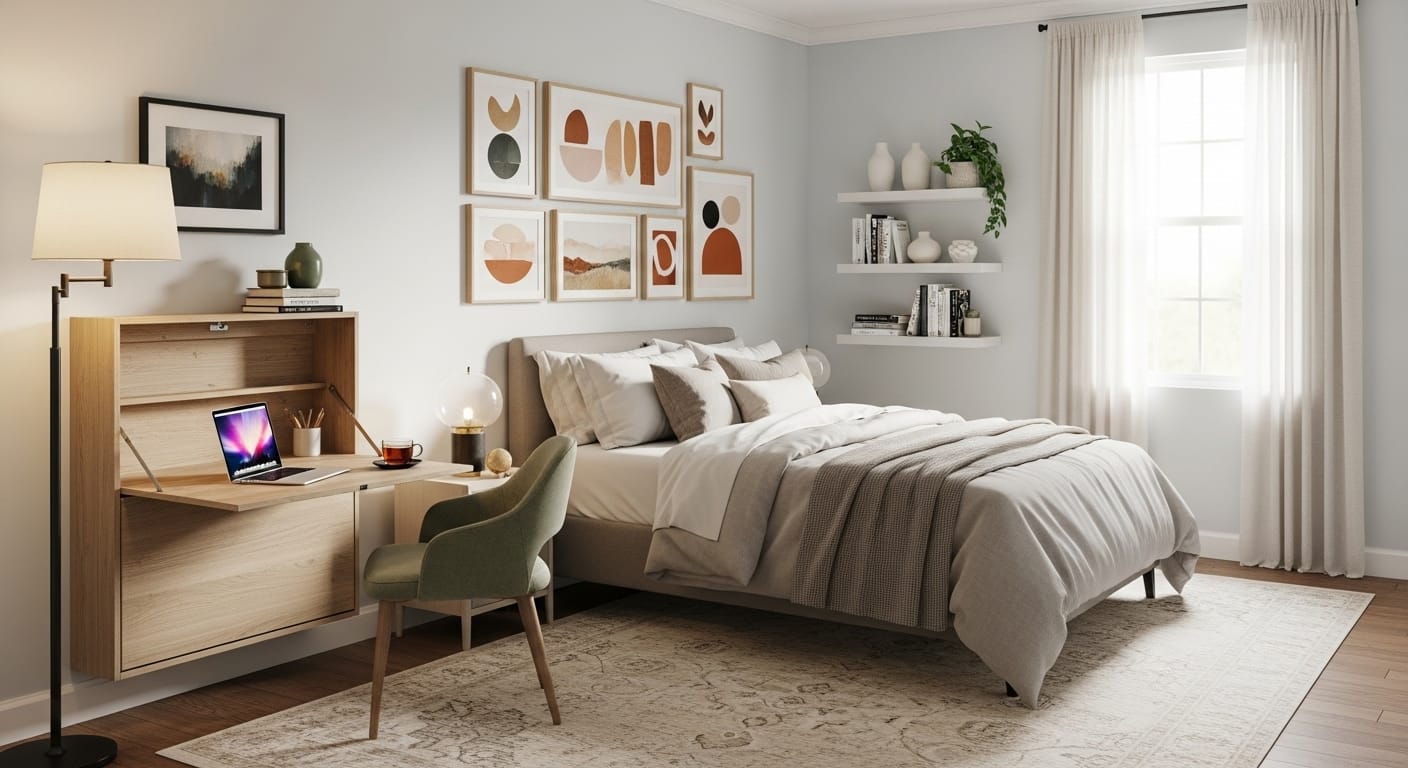
Platform beds offer a modern, minimalist approach, combining style with functionality.
Picture a low-profile wooden platform bed with crisp linens, complemented by a textured rug and minimalist side tables. Clean lines create a sense of calm and sophistication, while decorative cushions add subtle character.
Select a platform bed with built-in storage or an upholstered headboard for additional comfort. Layer textiles for depth and change decor seasonally to refresh the look. Low-profile mattresses maintain sleek aesthetics without requiring a box spring.
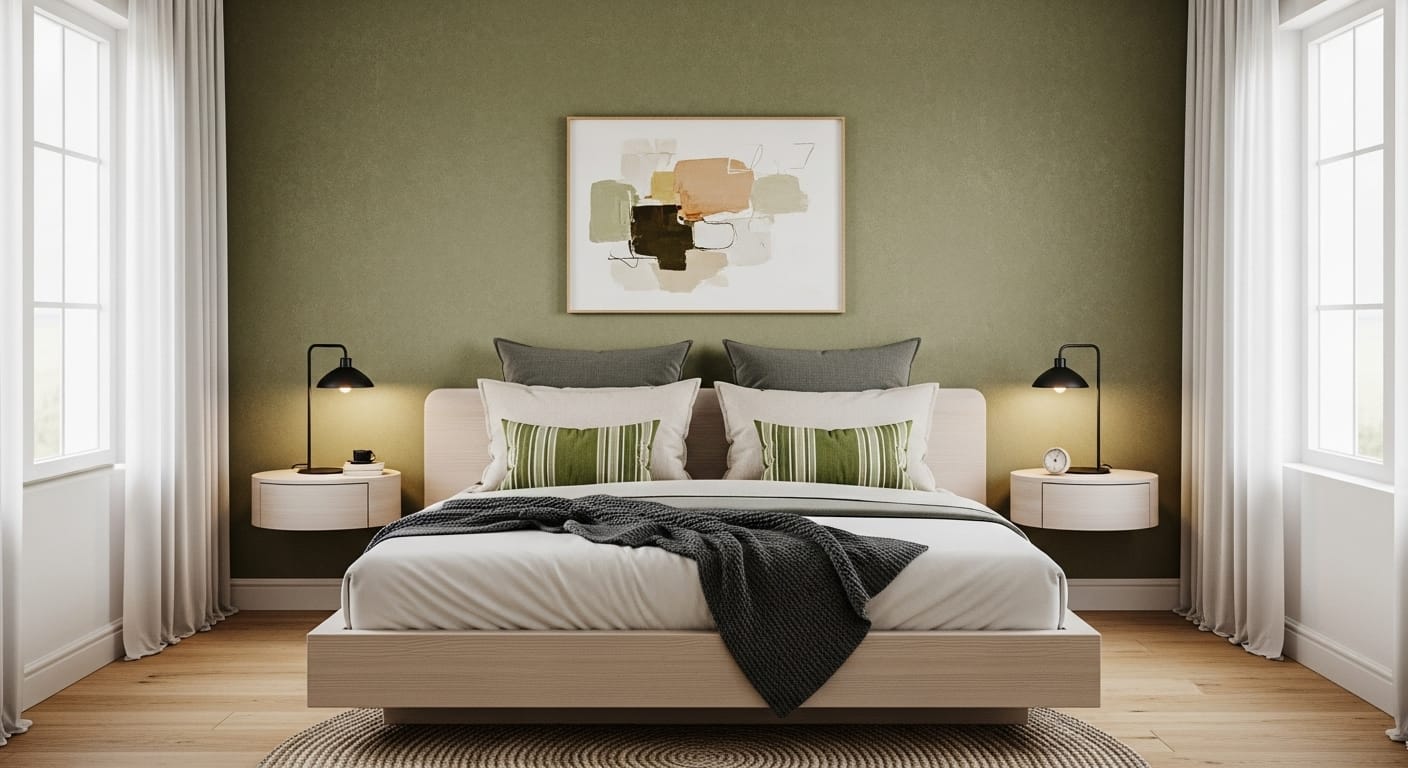
Adjustable beds allow personalized comfort for reading, watching TV, or sleeping.
Visualize a bed with a gentle incline for the upper body and adjustable leg positioning. A remote control enables effortless adjustments. Some bases include massage functions, USB ports, and ambient lighting.
Measure your frame and mattress for compatibility. Choose features like zero gravity positions or dual-mattress configurations for couples. Layer bedding to complement the adjustable functions. Regular maintenance ensures longevity.
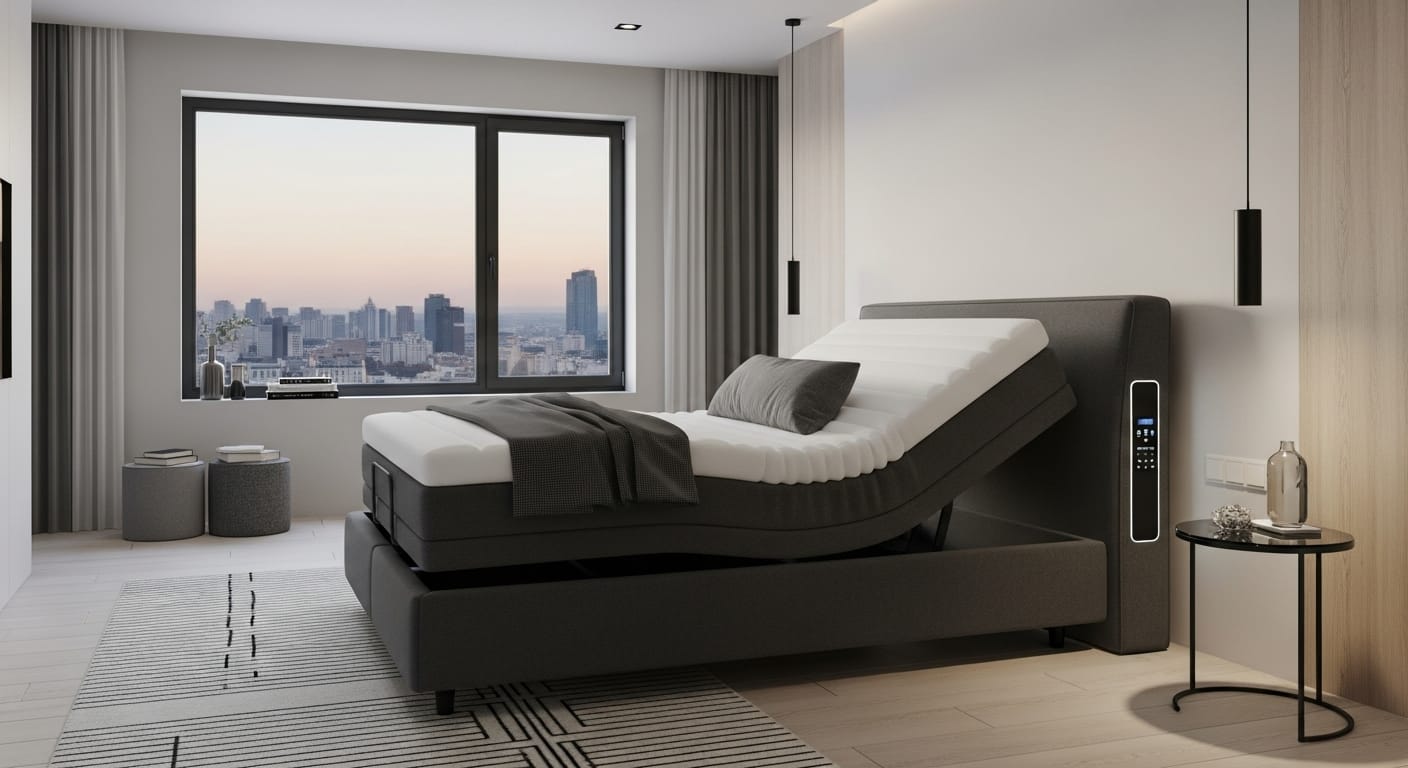
Layering bedding enhances visual appeal and comfort. Use textures and colors to create a cohesive, inviting setup.
Imagine a queen bed with a plush duvet, throws, and pillows in complementary shades. Varying textures—cotton, velvet, knits—add depth, while a consistent color palette ensures harmony. Seasonal adjustments keep the bed fresh and comfortable.
Begin with fitted and flat sheets, then add a duvet, throws, and pillows. Incorporate decorative elements like bed skirts or pillowcases for added style. Adjust layering based on bed size to avoid overcrowding smaller beds.
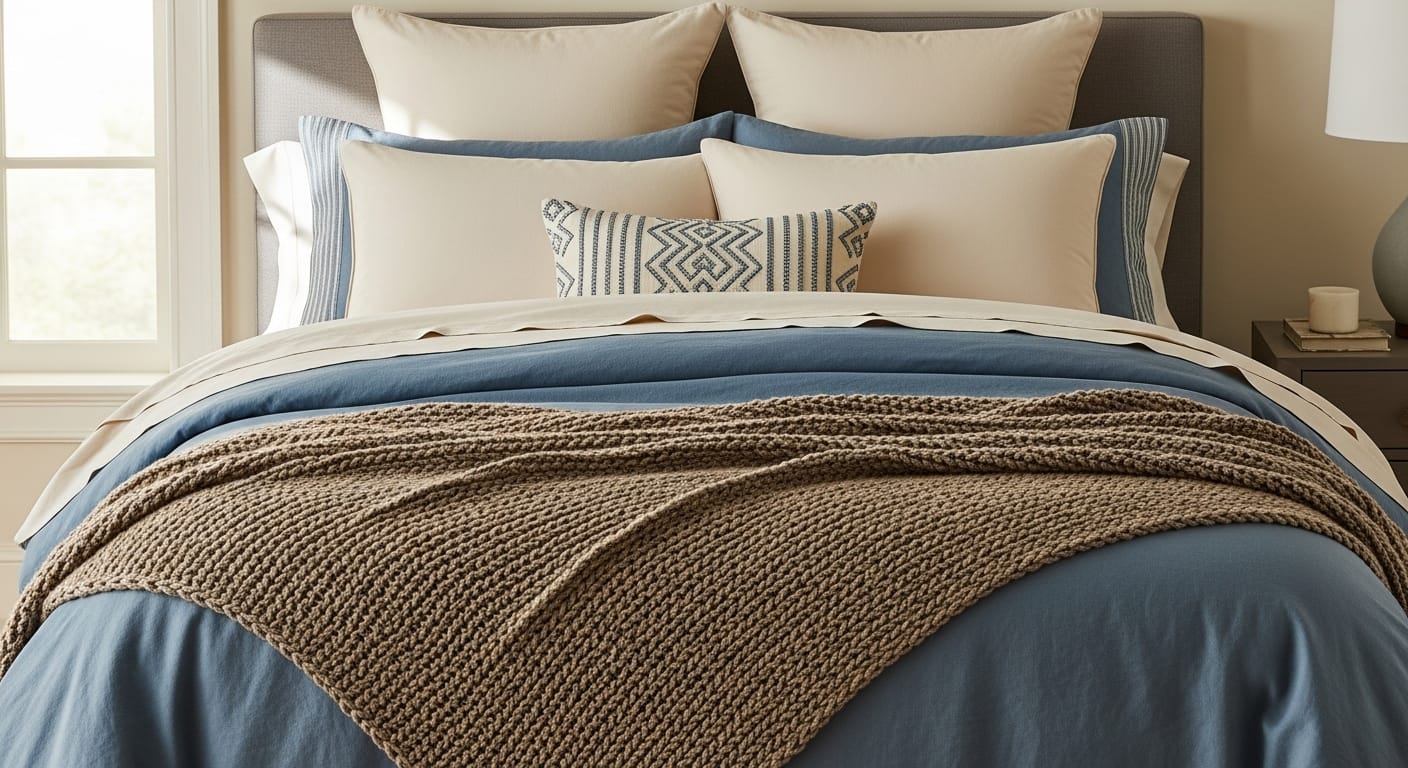
Bed frame style influences the room’s aesthetics and perceived balance.
Visualize a minimalist metal frame with neutral linens or a carved wooden bed in a rustic setting. Choose frame height and design according to room size. Low-profile frames suit small rooms, while taller frames add drama in larger spaces.
Pair frames with complementary bedding, headboards, and accessories to maintain harmony. Ensure pathways remain clear for functional flow.
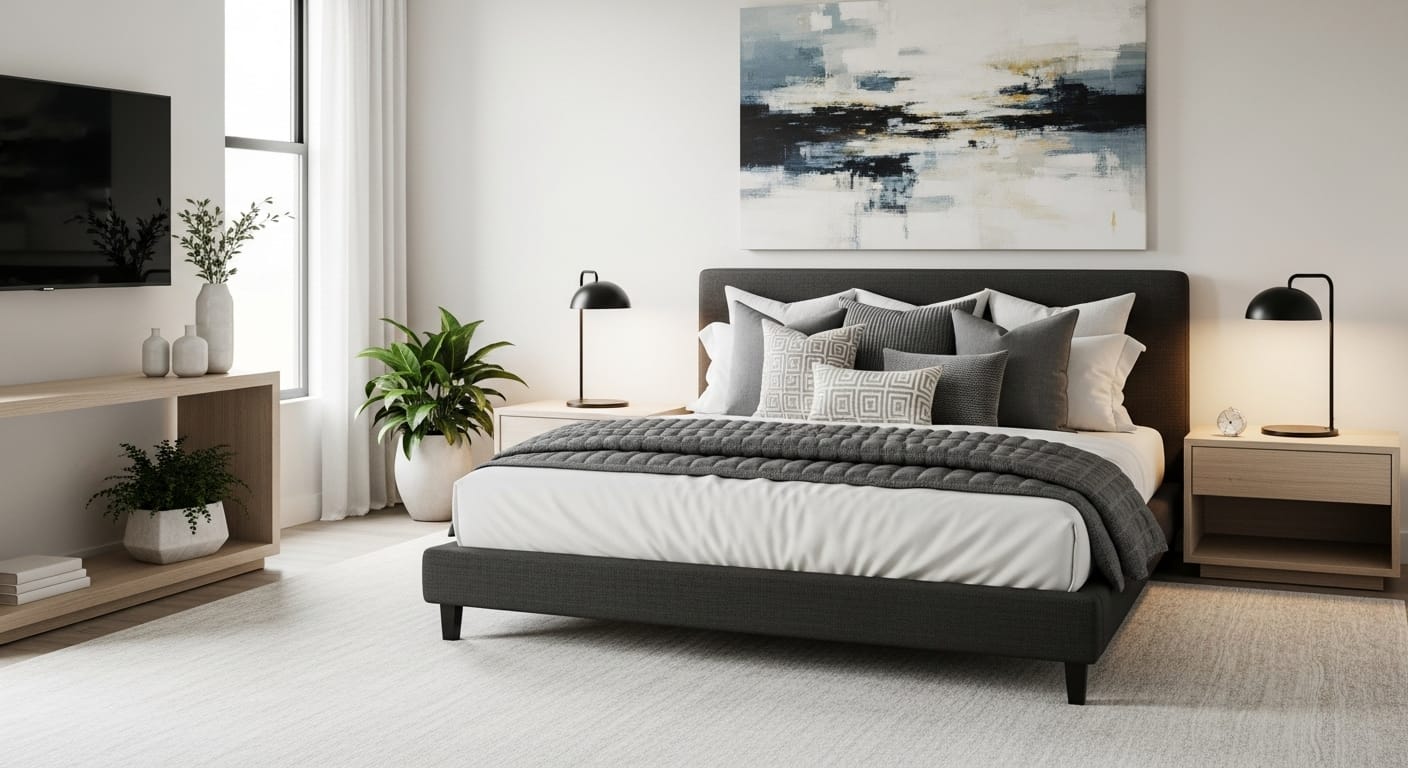
Large beds can consume space, making integrated storage essential.
Picture a king bed with under-bed drawers and a headboard featuring shelves. The design hides clutter while maintaining the room’s spacious feel. Combine storage with decorative touches for practicality and style.
Select beds with built-in storage, lift-up bases, or add modular solutions. Regular decluttering ensures continued efficiency.
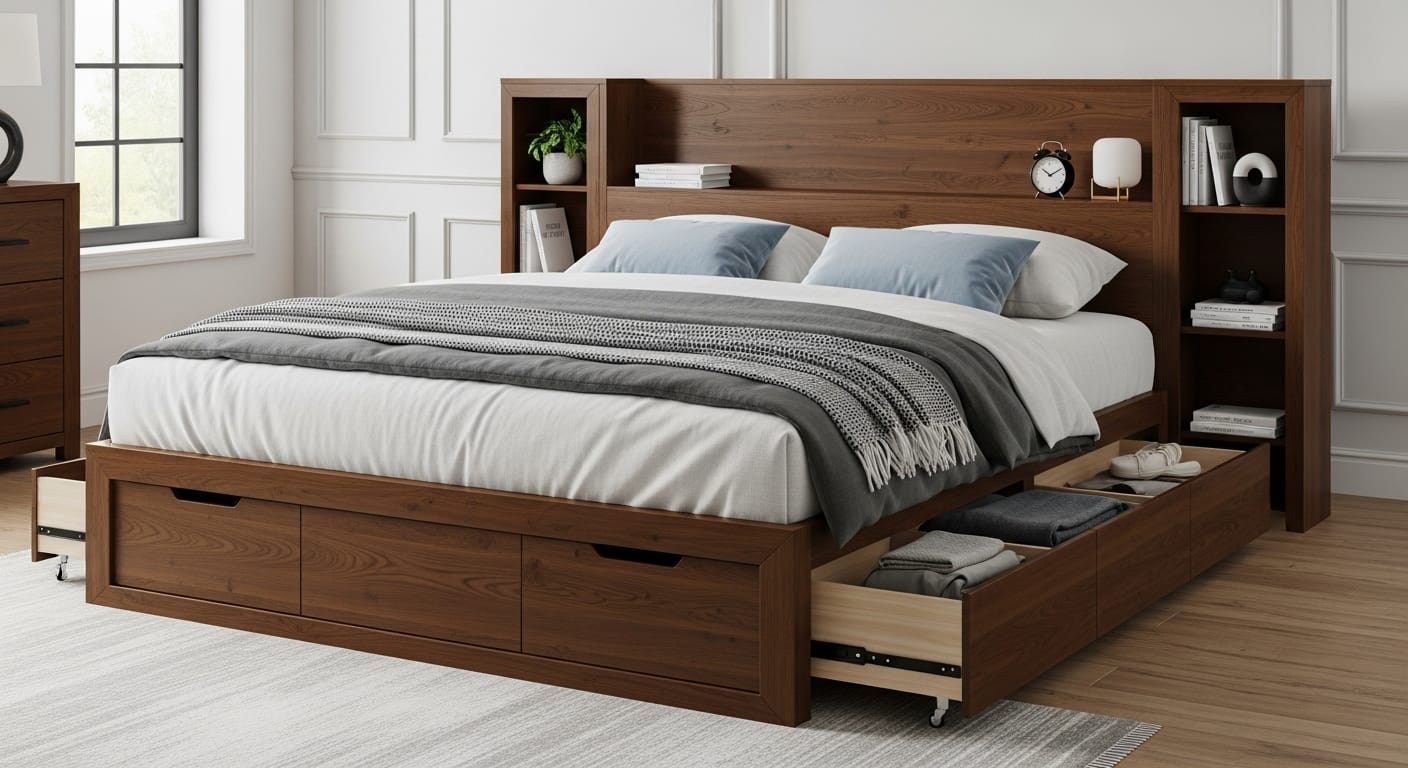
Mattress thickness affects comfort, support, and appearance.
Envision a queen bed with a 10-inch mattress and a king with a 15-inch mattress, both balanced and visually appealing. Thin mattresses suit low-profile frames, while thicker options provide plush support for larger beds.
Measure bed height, select the mattress according to sleeping style, and layer appropriately with sheets and toppers. Rotate regularly to maintain longevity.
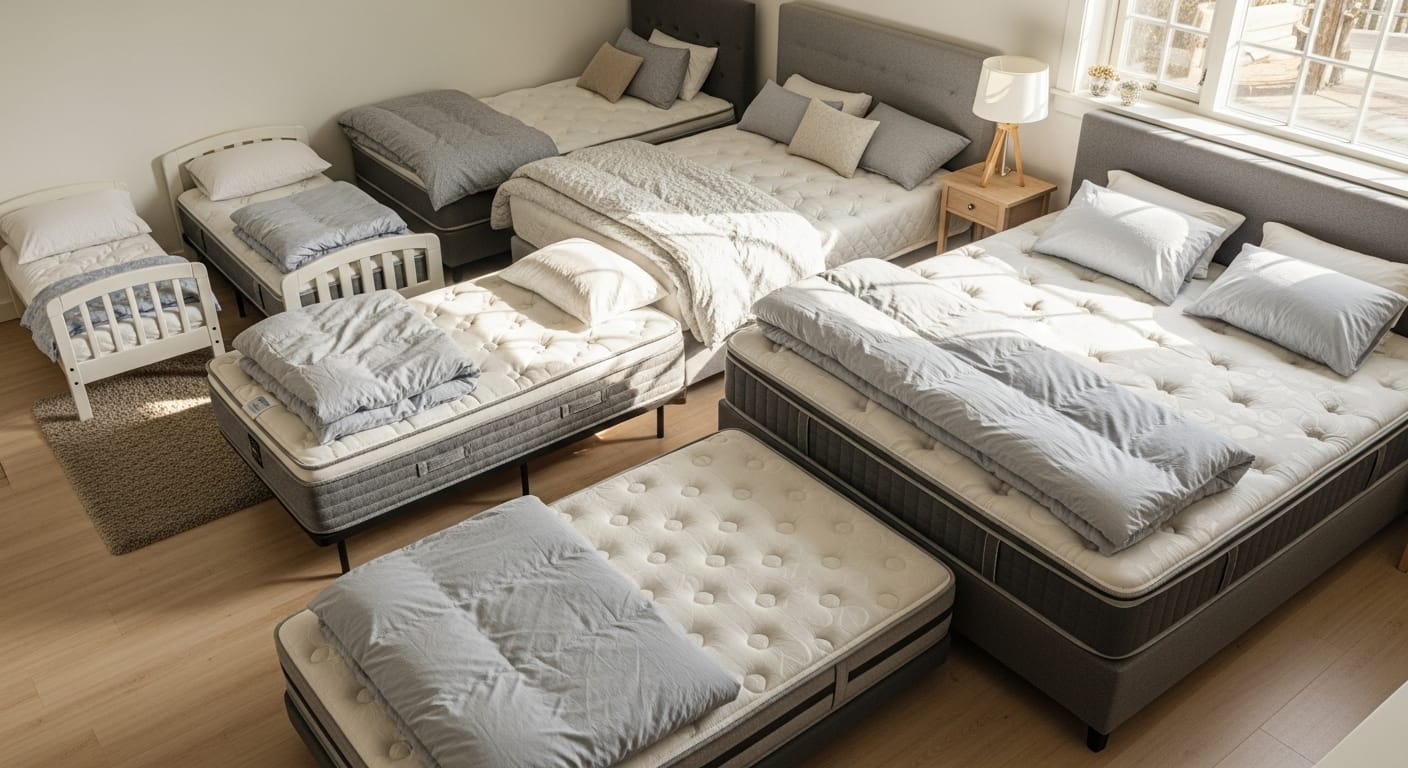
Nightstands should complement bed size, balancing function and design.
Visualize a king bed with matching nightstands, each holding essentials without clutter. Height should align with the mattress top for accessibility, and storage can vary according to needs.
Select proportionate pieces and maintain symmetry to enhance visual appeal. Minimal clutter ensures practicality.
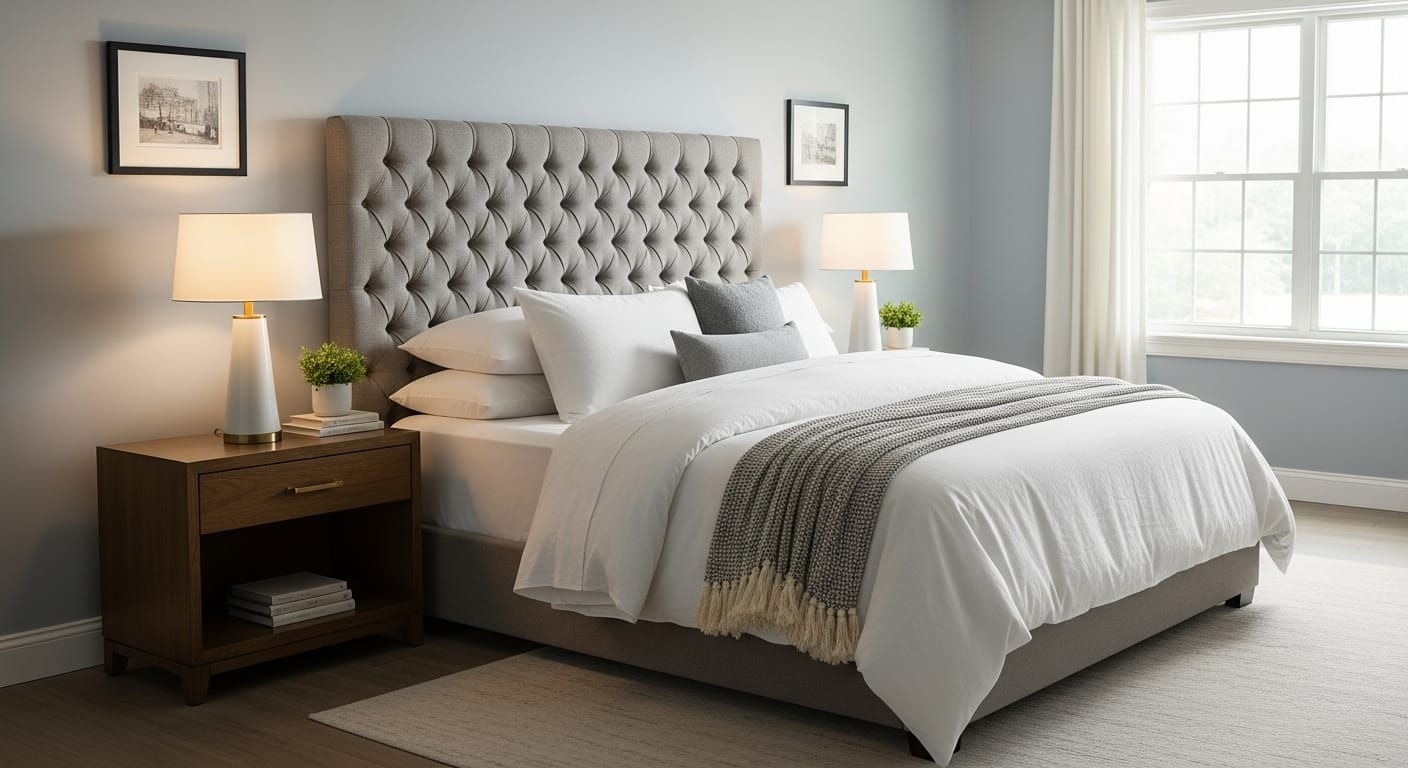
Rugs anchor the bed and define bedroom space.
Picture a plush rug under a king bed or a smaller accent rug for a twin. Correct sizing extends beyond the bed to frame the space, while texture adds warmth and comfort. Layering rugs can enhance depth.
Match rug style and color to bedding and curtains for cohesion.
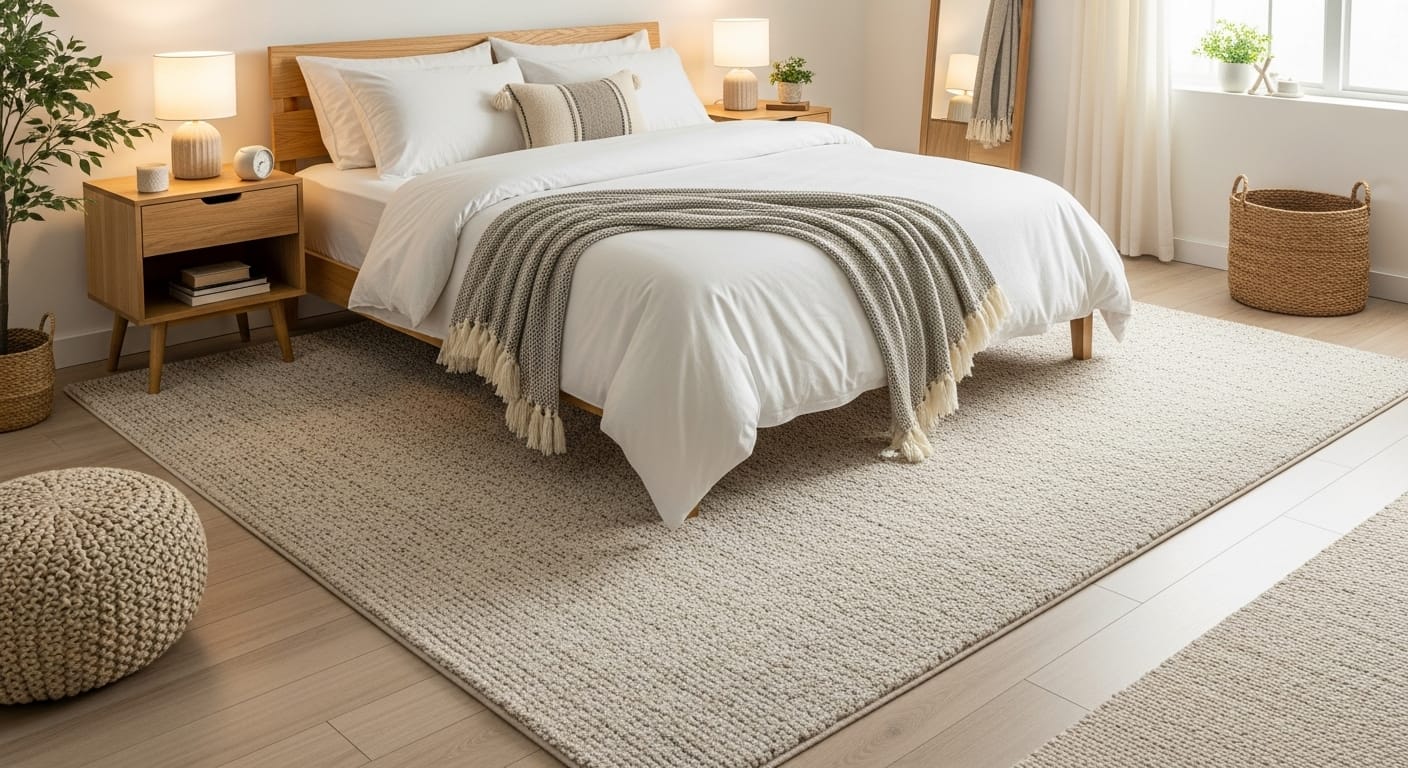
Headboards serve as focal points, enhancing scale and style.
Imagine a tall upholstered headboard for a queen bed or a minimalist wooden panel for a full bed. The headboard anchors the room and defines the style.
Choose materials and a scale suitable for the bed size, and add decorative details for personalization.
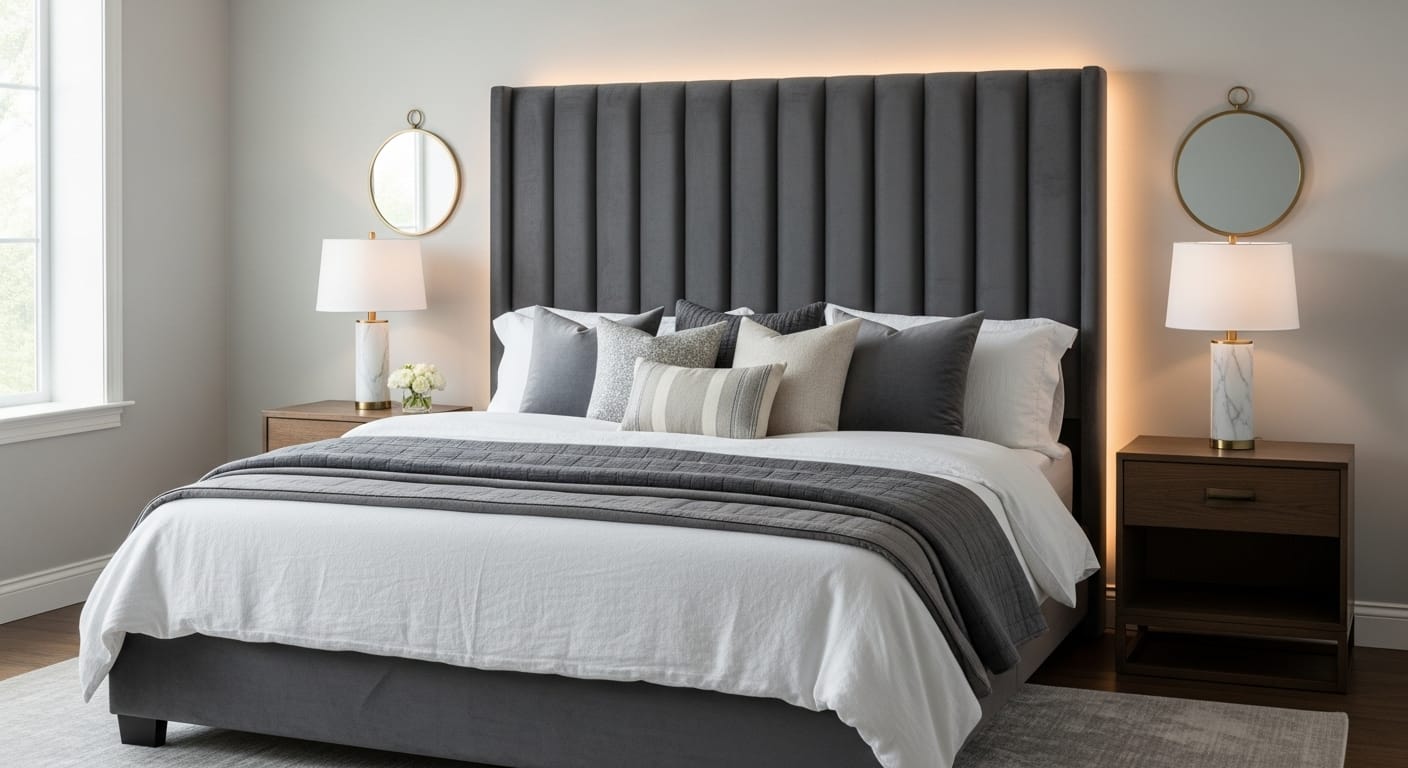
Maintaining bedding ensures comfort and longevity.
Visualize a freshly made bed with crisp sheets and a smooth duvet. Use appropriately sized linens, wash regularly, and follow care instructions. Seasonal rotations keep bedding fresh.
Invest in durable fabrics, use gentle cycles, and store extras properly.
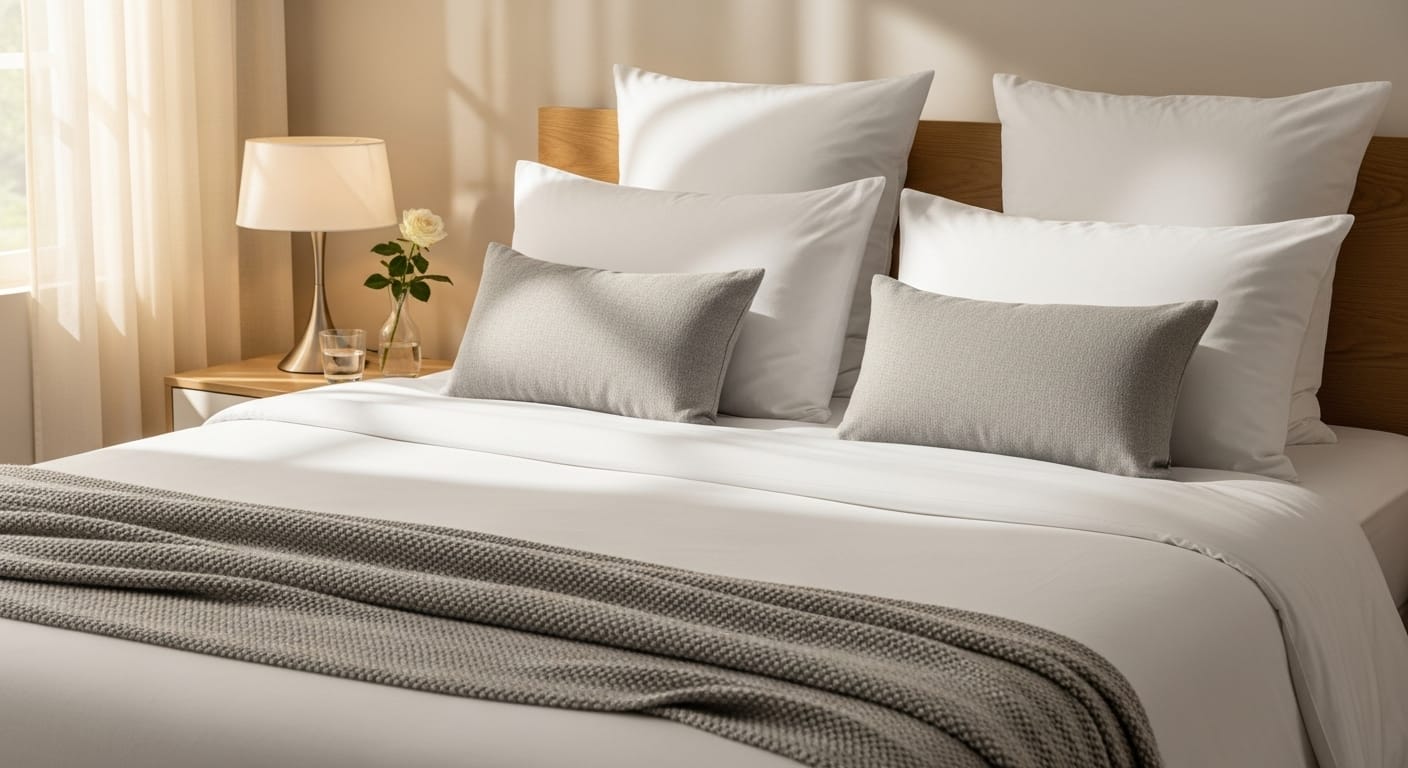
Modular and convertible beds adapt to changing needs.
Imagine a platform that transforms from a sofa to a bed, or a fold-down wall bed revealing a workspace. Multi-use furniture maximizes space and versatility while maintaining a clean aesthetic.
Select customizable systems, assess room dimensions, and use high-quality materials. Add personal touches and seasonal updates to keep the space functional and stylish.
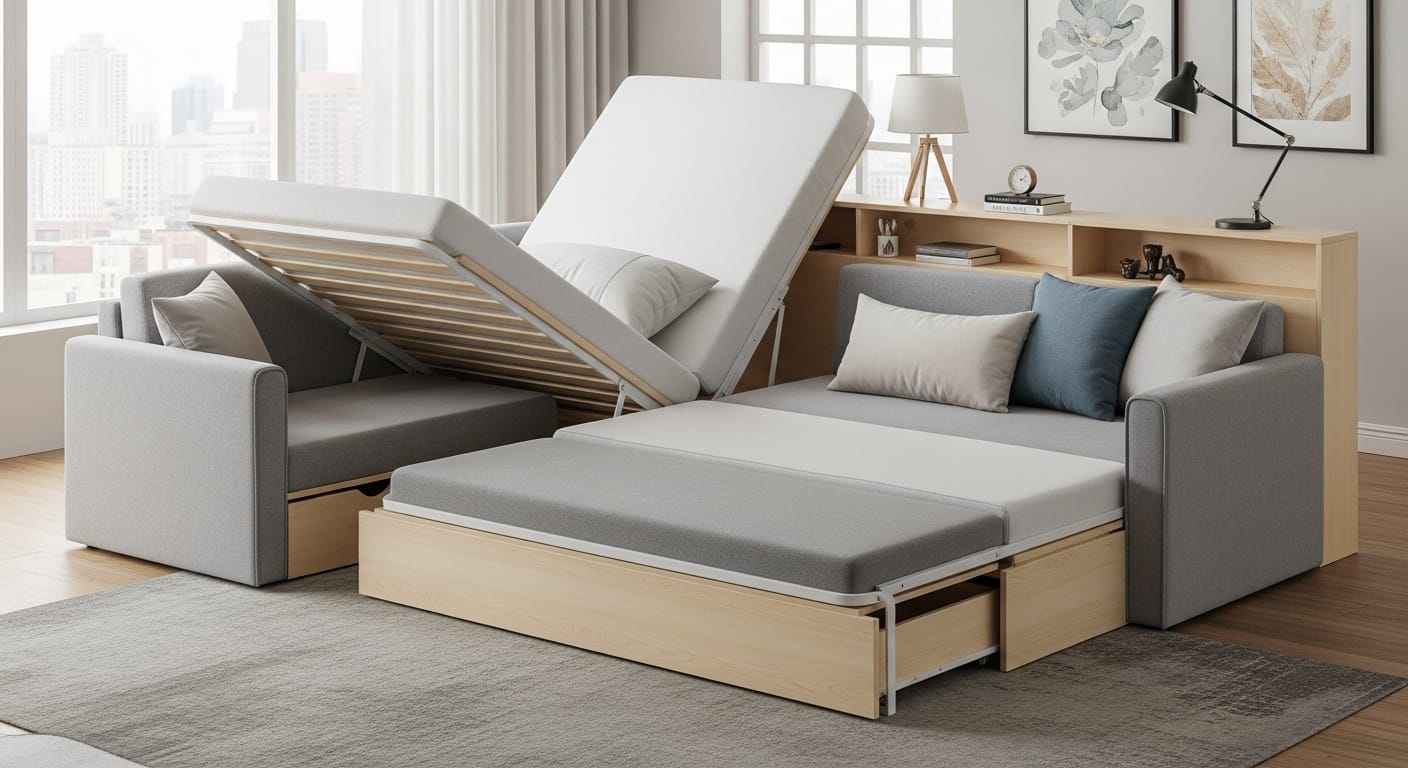
Bed size is just the starting point; style and trends personalize your bedroom.
Visualize a boutique hotel-inspired bedroom with layered textiles, a trendy headboard, and ambient lighting. Follow current trends like eco-friendly materials, bold colors, or vintage accents while prioritizing comfort.
Mix patterns, textures, and accessories to reflect your personality. Rotate decor seasonally for freshness, creating a stylish and functional sanctuary.
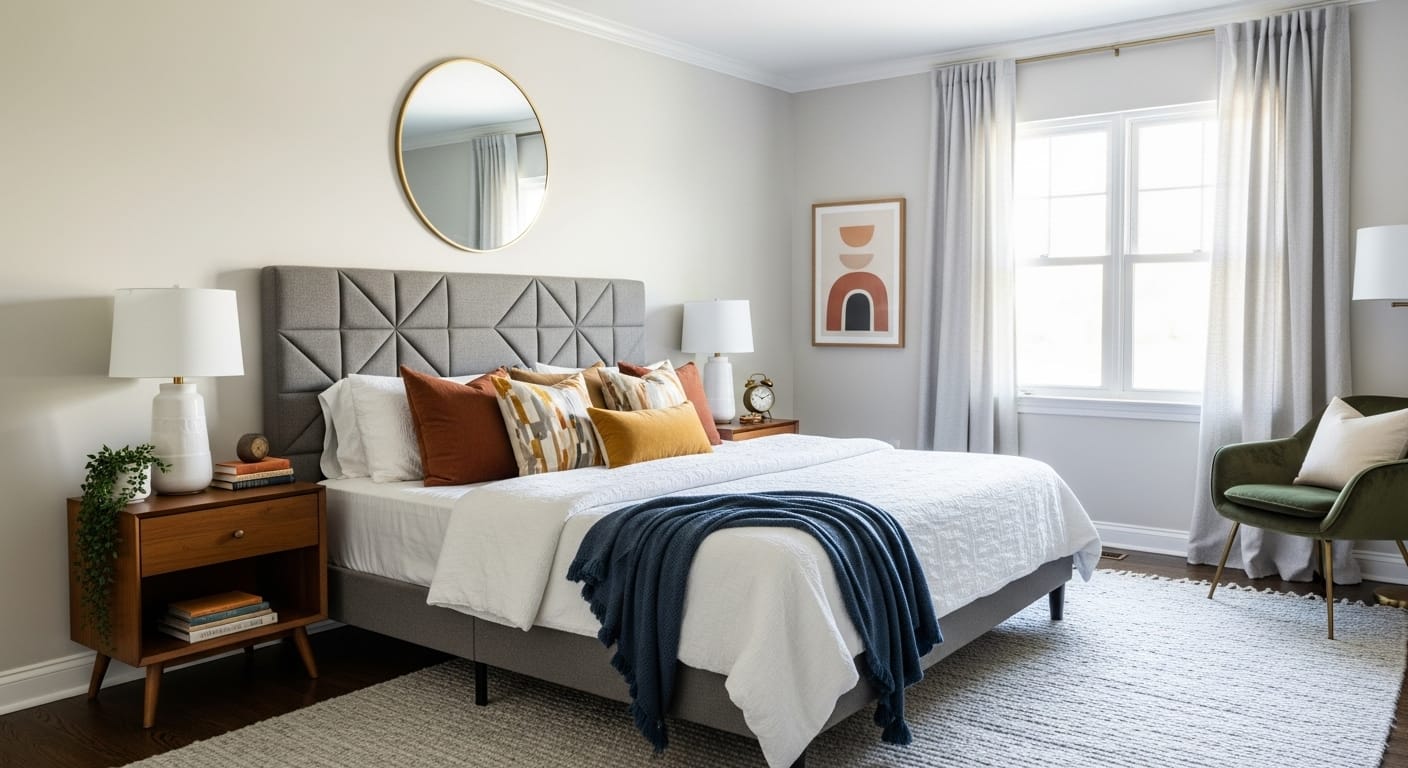
Exploring bed size options unlocks a world of comfort and style possibilities. With careful planning and attention to detail, you can choose the perfect bed size and design a bedroom that meets your needs, expresses your personality, and enhances your daily rest. Experiment with layouts and features to create your ideal sleep sanctuary.
Let’s Build
Contact us todayGet daily tips and tricks for making your best home.
2025 Green to Gorgeous